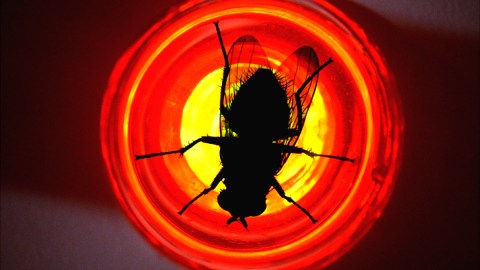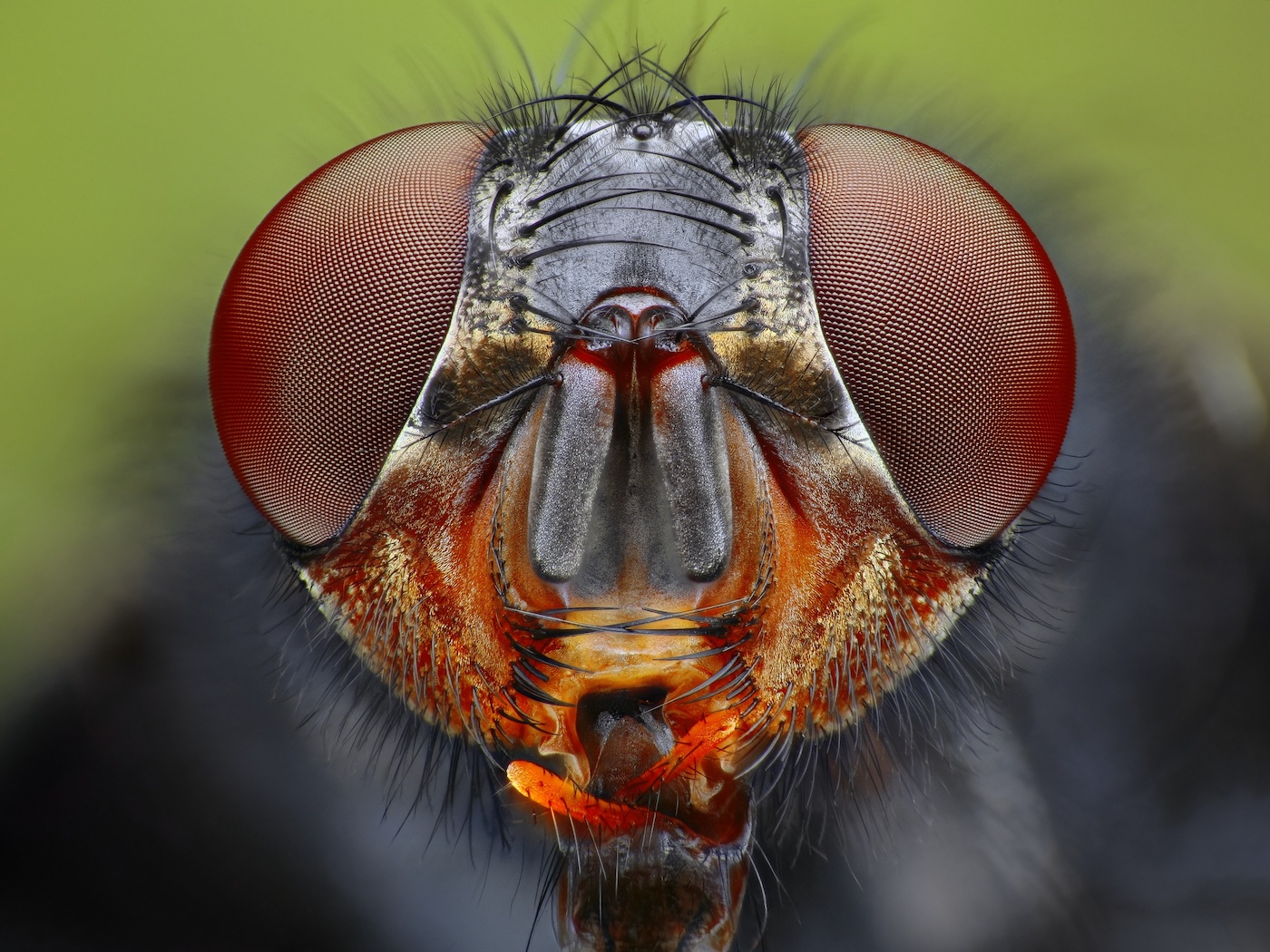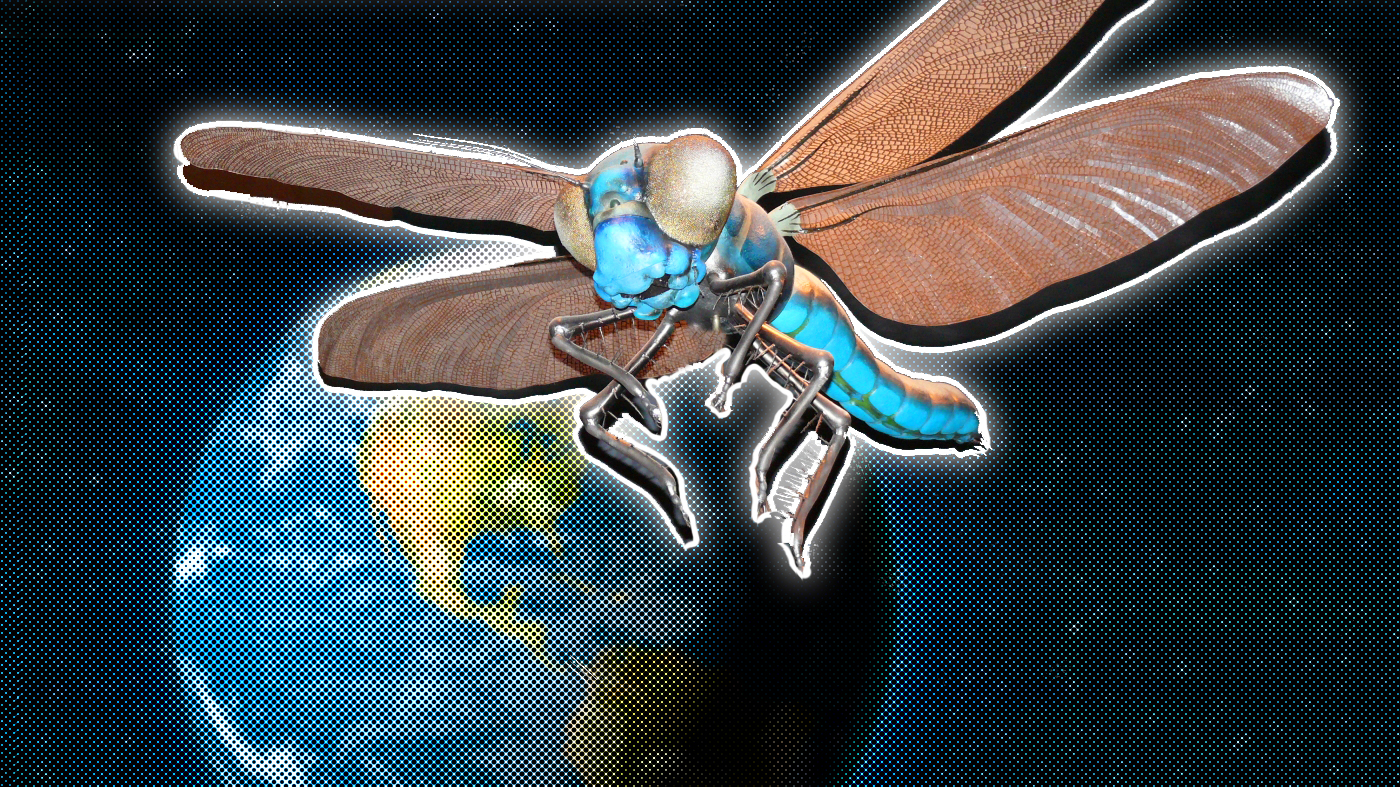You’re not fast enough to swat a fly. Here’s why.

- What flies lack in intellect they make up for in agility.
- The reason flies almost always outmaneuver swats from humans has a lot to do with the speed at which the insects see the world.
- This measurement is called “flicker-fusion frequency.”
Flies are, without a doubt, pretty stupid. They have puny brains. They buzz into deadly bug-zapper lights, one after another. You’d think that they’d be easy to swat one down, but no, the fly almost always outmaneuvers your attack and escapes, living to see another one of its 28 days.
It’s like you’re moving in slow motion.
Actually, from the fly’s perspective, you quite literally are moving in slow motion, because every species experiences time differently. The reason? Differences in sight.
All animals, including humans, see the world in what’s essentially a seamless movie. What’s really happening, however, is that the brain is taking individual images sent from the eye at a fixed rate per second in distinct flashes and piecing them together.
The rate at which this occurs is called “flicker-fusion frequency,” which is measured by determining how rapidly a light needs to be switched on and off before it appears to an animal as a continuous stream. Scientists measure this in insects by hooking up tiny glass electrodes to the photoreceptors of its eyes and flashing light at increasingly fast speeds, all while a computer graphs the signals sent from the photoreceptors.
It turns out this rate is different for every animal. The general rule is: the smaller the species, the quicker the vision.
Humans see about 60 flashes per second while flies see about 250 — a full four times faster than humans.
In fact, the majority of flying animals, including vertebrates, have faster vision than humans – possibly because it’s mortally important that they’re to quickly react and dodge obstacles.
(A quick note about trying to get your dog to watch TV: The refresh-rate on traditional TVs is about 60Hz, which is on par with the flicker-fusion frequency of humans. However, dogs see at about 80Hz, which means that unless you have a high-quality TV, your favorite movie appears as rapid-fire still images to your dog.)
The fastest-seeing flies are blindingly quick, even relative to their own kind. A “killer fly,” a predatory species found in Europe, is able to launch from a resting position into the air, circle several times around another fly in mid-flight, catch it, and bring its twitching body down to the ground in less than a second.

Why is the killer fly so much faster? The light-detecting cells in its eyes contain more mitochondria, essentially the “batteries” of cells, than other flies, and this powers its supercharged vision. For this insect, time moves in extra-slow motion – about six times slower than it does for humans.
It begs the question: If certain flies see more quickly than other flies, then do some people experience time differently than other people? Does that have anything to do with why times seem to speed up as we get older?
Quite possibly, according to Andrew Jackson, an associate professor at Trinity College Dublin in the Republic of Ireland who has researched flicker fusion rates among various species.
“It’s tempting to think that for children time moves more slowly than it does for grownups, and there is some evidence that it might,” he told The Guardian. “People have shown in humans that flicker fusion frequency is related to a person’s subjective perception of time, and it changes with age. It’s certainly faster in children.”
This article was originally published on Big Think in September 2017. It was updated in July 2022.





